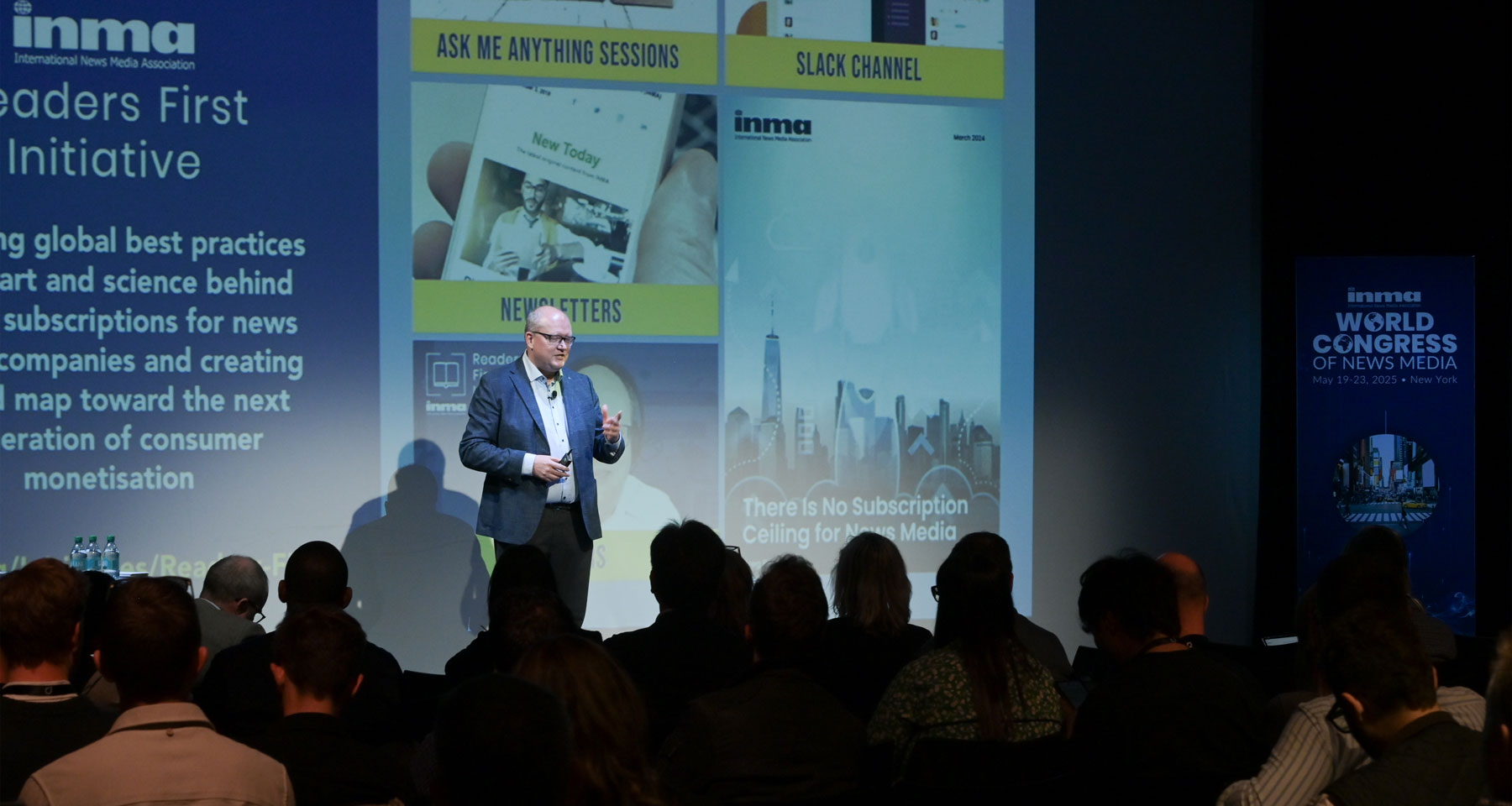- The Publisher Newsletter
- Posts
- How to convince your boss to invest in print
How to convince your boss to invest in print
It’s pretty easy to convince magazine fans that print is worthwhile, but it can be more difficult to bring around hard-nosed publishing managers. Here are 10 arguments you can make to stop managing decline and get your boss on board with a long-term print strategy.
Welcome to The Publisher Newsletter, by Media Voices. We’re just 7 days out from the Publisher Newsletter & Print Summit on Tuesday 10th June, followed by the Publisher Podcast & App Summit on Wednesday 11th June.
We’ve worked really hard to craft an agenda which will be really useful to you if you’re working on newsletters, print, podcasts or apps, or even looking to launch in those areas.
Use the code MVFRIEND20 at checkout for 20% off - we look forward to meeting in-person!
How to convince your boss to invest in print
This is a sample chapter from our upcoming Inside the Print Revival report, which will debut at the Publisher Print Summit on Tuesday June 10th. The report will be available as a free digital download which you can fill in to be sent to you as soon as it goes live, or (of course) a printed version will be available to purchase from next week.
It’s pretty easy to convince magazine fans that print is worthwhile, but it can be more difficult to bring around hard-nosed publishing managers.
Here are 10 arguments you can make to stop managing decline and get your boss on board with a long-term print strategy.
1: Print doesn’t have to cost a fortune
Fewer printed magazines is not something any print fan would support – unless it means more, better, premium-quality magazines. Cutting print schedules from weekly to monthly, monthly to quarterly, even bi-annual or annual is one way to keep publishing a quality product without breaking the bank.
Reducing paper weight is also an option if cost is a concern, but be mindful that discerning readers will notice. The last thing you want is for your paying audience to think that you have entered a publishing doom-loop where the inevitable outcome is your exit from the field.
2: Print can be profitable
Print publishing alone probably won’t make you rich, but that doesn’t mean that you can’t turn a profit with your magazine. Manage costs through clever workflows that integrate your print and digital content to support effective repurposing, and right-size your team to suit amended publishing schedules.
More important than costs, think about pricing. Print readers have a propensity to pay in a way that digital readers don’t. You can’t simply push your prices up, but if you communicate the real costs associated with producing a premium-print product, and can demonstrate the quality you are delivering, your true fans will pay more.
3: Print brings incremental revenue
Each iteration of your content is an opportunity to bring in additional revenue from a different audience. The people that read TIME magazine online may be very different from the people who read the weekly in print - but that doesn’t mean you should see your print publishing operation as separate from your digital output.
Your print and digital content need to be complementary. Alex White at Immediate Media told me the holy grail for modern publishers is maximising the ROI on content creation. The most successful publishers do a great job of ‘sweating their assets’, making use of their content on as many platforms as makes sense.
4: Print supports premium positioning
It isn’t easy to make a website feel special. Podcasts and newsletters can exude personality, but it’s hard to tell them apart inside a podcast or email app. On the other hand, picking up a well-made magazine instantly communicates its value. Readers can feel the weight, get a sense of the number of pages they are buying, and see the design.
Get the content, design and production values right and a print magazine becomes an affordable luxury for your readers. There’s no guessing what’s behind the paywall, it’s all right there in the pages for the reader to take home and keep on their shelf.
5: Print increases visibility
Print doesn't bring scale, but increasingly, neither do websites or social media. The digital noise is deafening, and getting your message heard online is only going to get harder. While print won’t go viral, it will sit on the coffee tables of your readers for weeks at a time, a constant reminder of what you do.
Even on overworked digital channels, social proof – from magazine shelfies to discussions in online communities – is a secret weapon for magazine publishers trying to cut through. And although traditional newsstand space is shrinking, specialty retail shops are bringing awareness to highly engaged audiences.
6: Print builds direct relationships
To ship a printed magazine to a reader, you literally need to know where they live. Your relationship isn’t disintermediated by an algorithm or a search engine; you're in touch, direct to their mailbox, inside their home. And when you sell directly, you have their credit card or bank details. That relationship is yours to build on.
Content sinks without a trace in the constant stream of social media posts and shared links. But once you’ve put your magazine in your readers’ hands, they will always be able to find you and the content you create, able to recommend your work to their friends just by picking it up and handing it to them.
7: Print superserves superfans
The collapse of the NFT craze illustrates just how hard it is to really own anything virtually, in stark contrast to print’s tangibility out in the real-world. Collectors throughout history have expressed their philosophies and their passions through the written materials that they collect, from ancient manuscripts to comic books.
Your true fans, your superfans, want to complete their collections. Creating subscriber-only covers, cover series or merchandise is catnip to the completists. Make exclusives that deliver collectible value and you can deepen reader loyalty at the same time as boosting your bottom line.
8: Print offers an alternative
Research published in May 2025 by the British Standards Institution showed that 47% of young people aged 16 to 21 would prefer to be young in a world without the internet. That is only the most recent report spotlighting a society-wide backlash against our always-on digital culture.
Print magazines give exhausted audiences an easily accessible, distraction-free alternative to the firehose of digital media. The carefully curated serendipity of a good magazine lets people swap the endless scroll of social media for a bounded parcel of pages – informative and inspirational – that they can trust not to descend into a toxic hellscape.
9: Print enhances your portfolio
Despite our misgivings, no one thinks digital media is going to disappear. Modern publishing is a portfolio play, and done well, a strong digital-print mix can add real value to a brand. Where digital publishing can be faster, more convenient and sometimes cheaper, print plays to different strengths.
The slower pace of print allows for the development of context and nuance. Longreads work better on print real estate where there is more space for editorial design to support the storytelling. And a print magazine puts the reader in control of their media consumption, letting them put it down and pick it up where they left off whenever they want.
10: Print can be environmentally friendly
It’s easy to assume digital is greener – but the truth is more complicated. Energy hungry data centres, environmentally unfriendly device manufacturing and disposal, constant cloud-syncing… they all contribute to an invisible carbon footprint that outweighs the one-time impact of producing a print magazine.
Done responsibly, print can be part of a circular economy: made from sustainably managed forests, produced using renewable energy, supported by carbon offsetting schemes, made to be easily recyclable or designed to be collected and kept. Print’s longer lifetime value cuts its carbon footprint and it never needs to be refreshed, recharged or renewed.
This piece is a sample of our Inside the Print Revival report, going live on Tuesday 10th June at the Publisher Print Summit. Register on our pre-download page now to get the report in your inbox as soon as it goes live.
The Publisher Summits are designed to help those working at the forefront of newsletters, print, podcasts and apps, from editorial and operations leaders to practitioners and senior decision-makers.
Come away with real, actionable ideas and inspiration for your own products, all at an excellent value ticket price.








